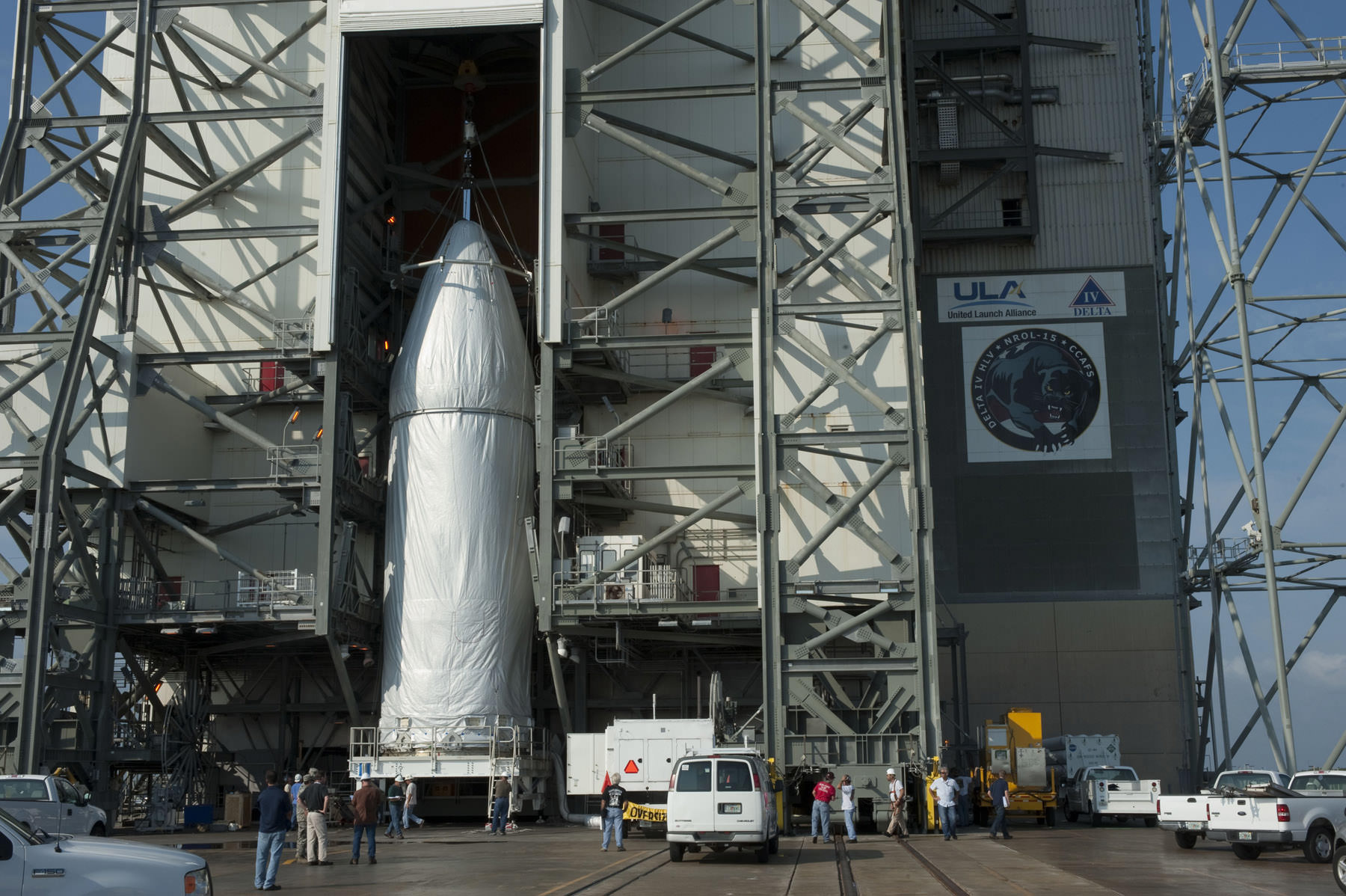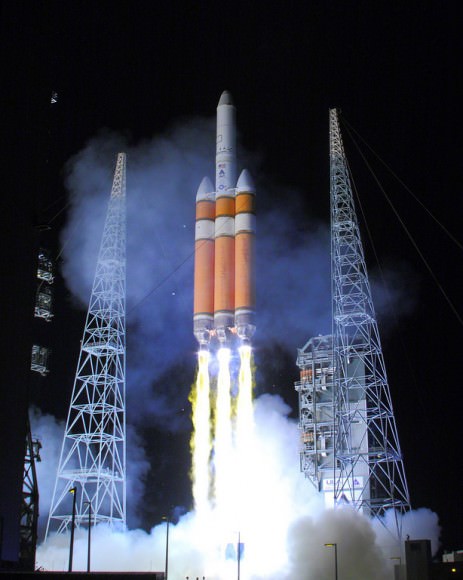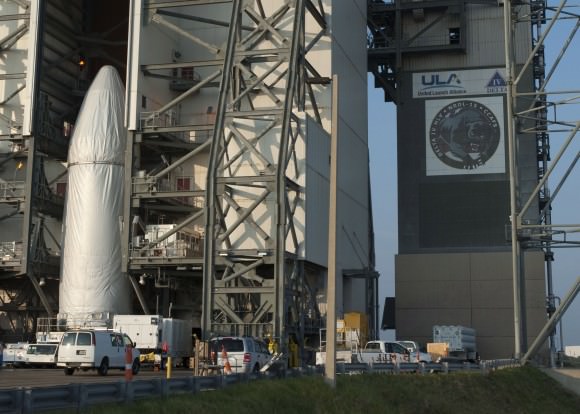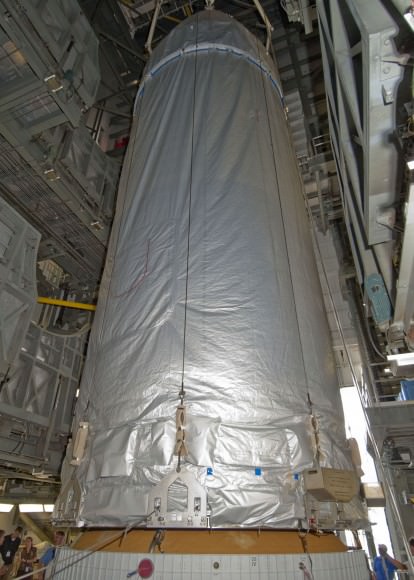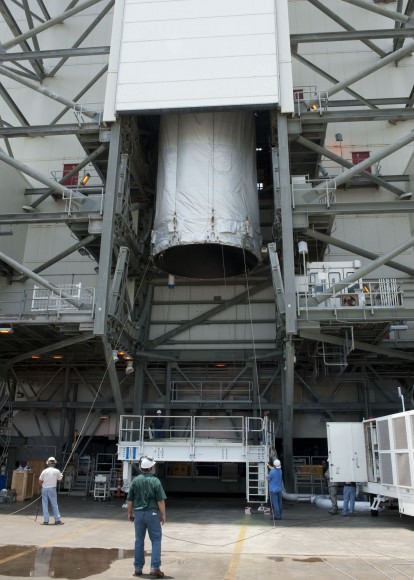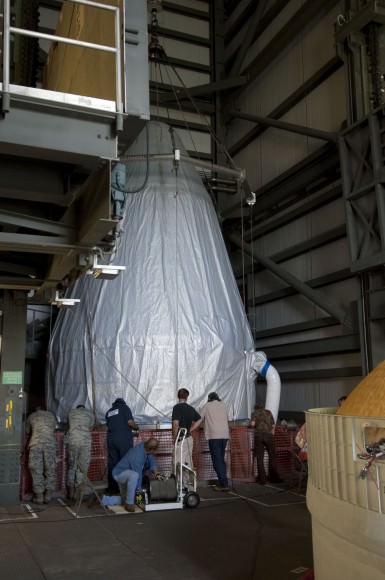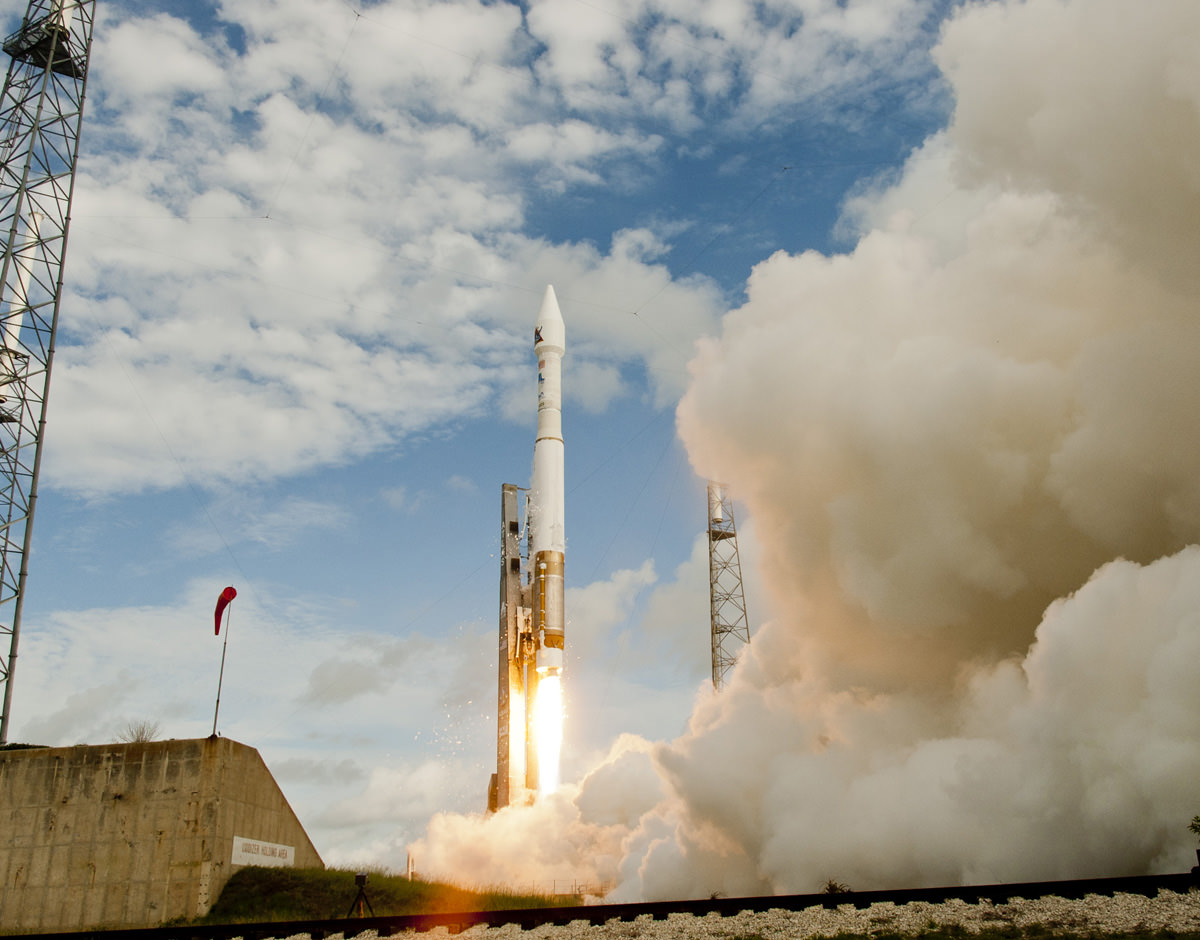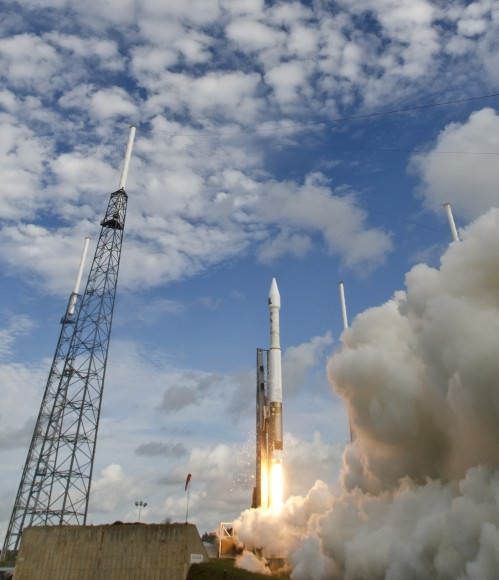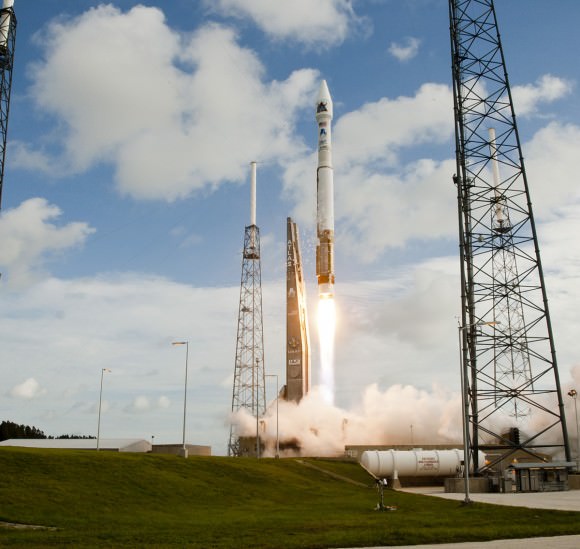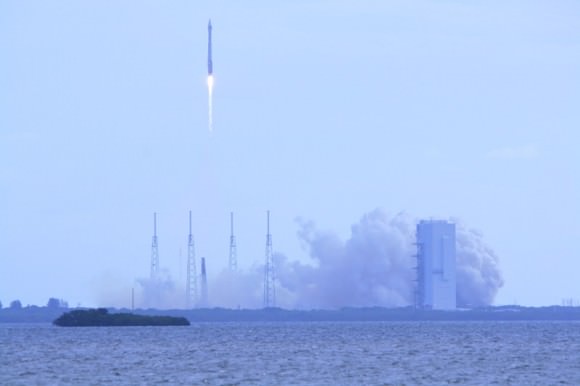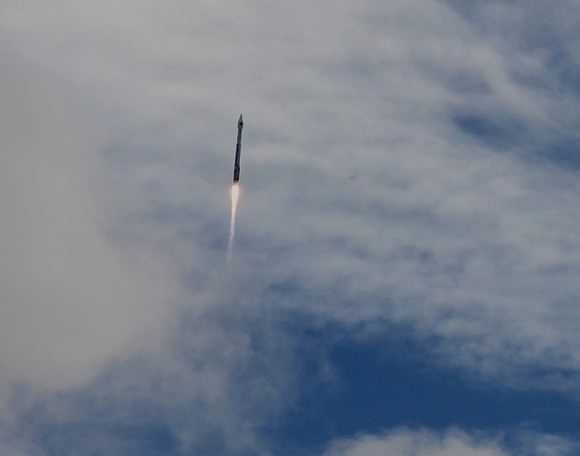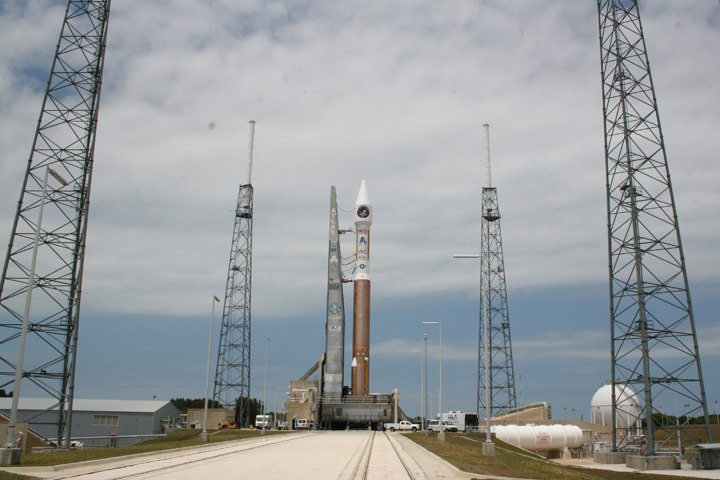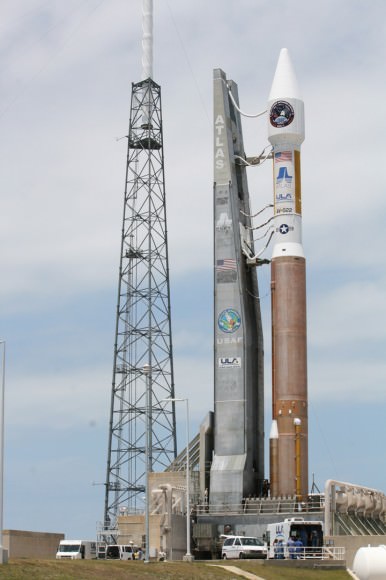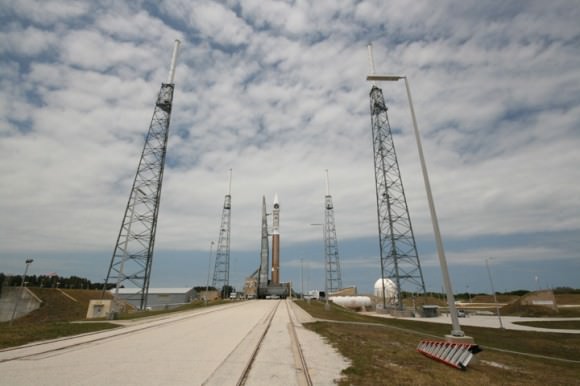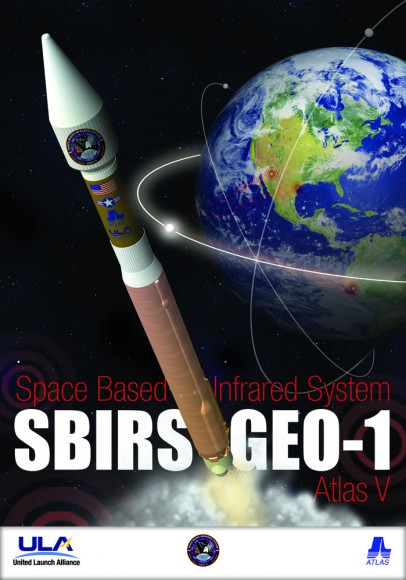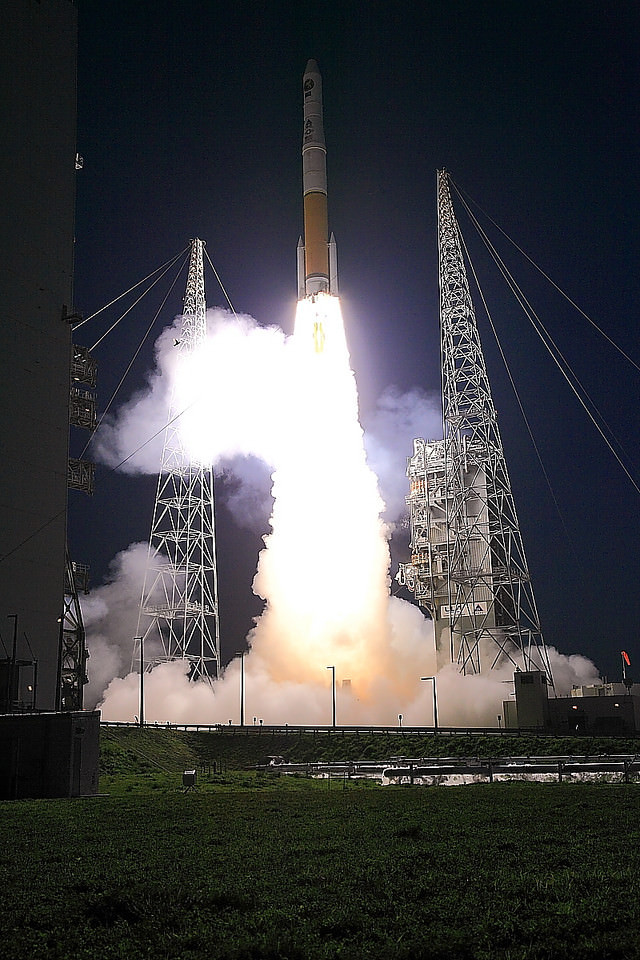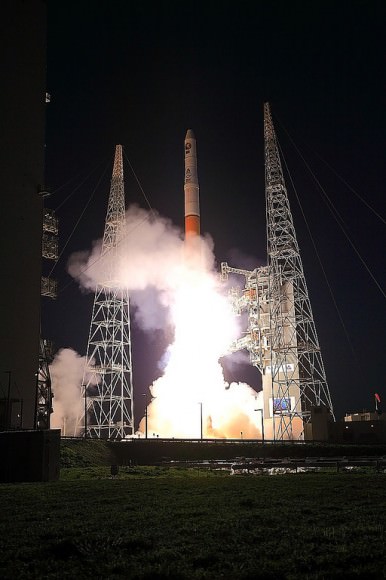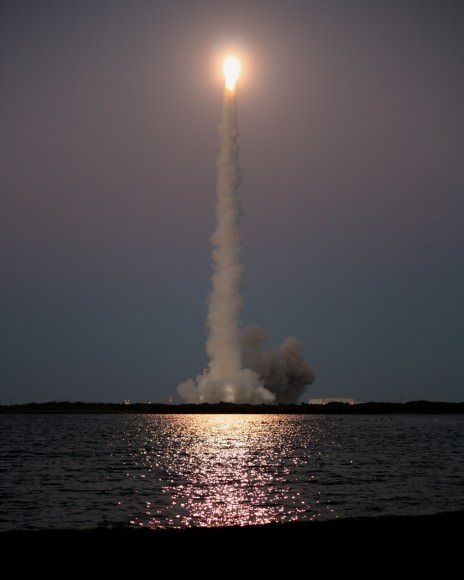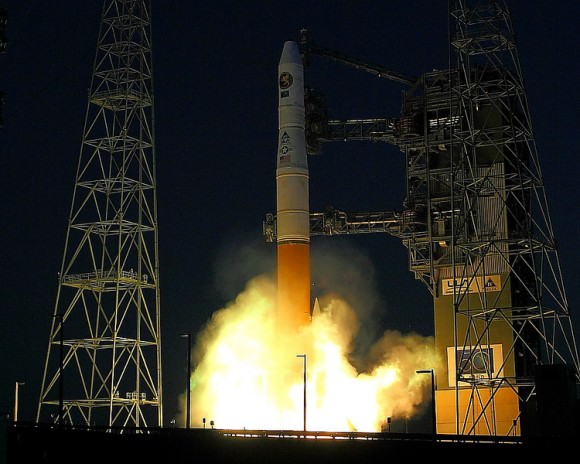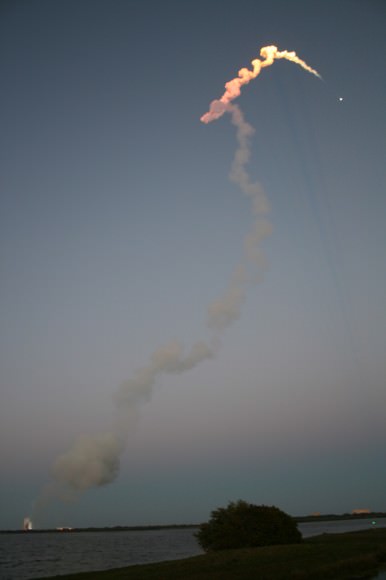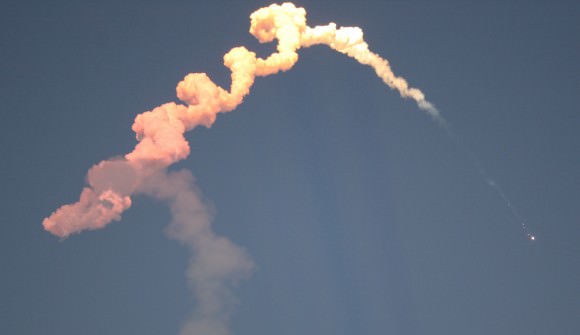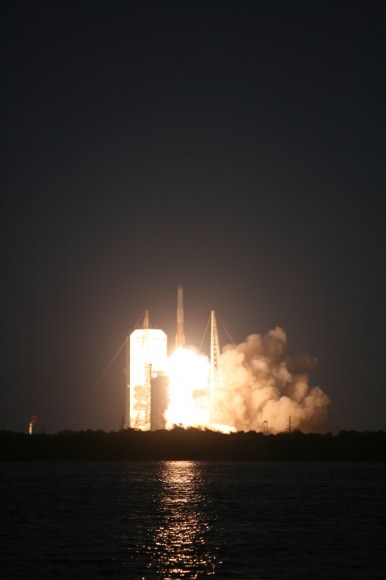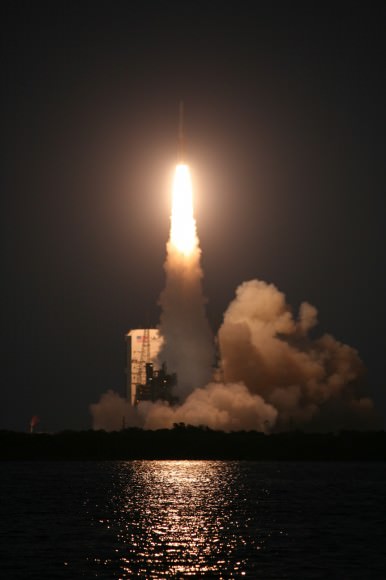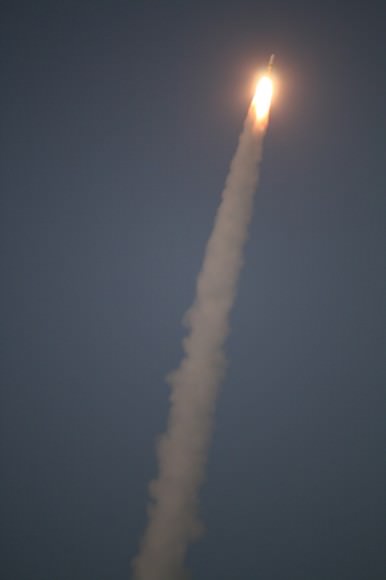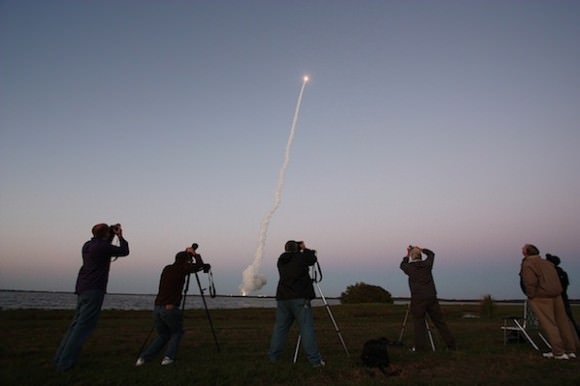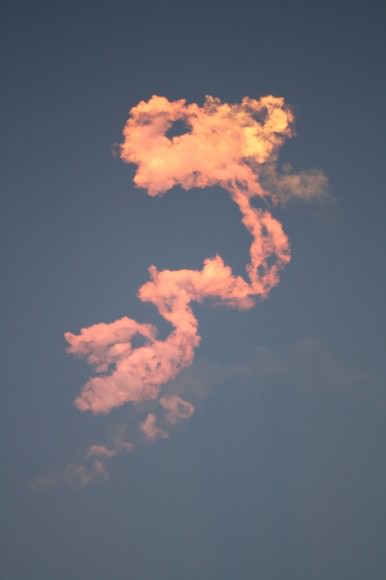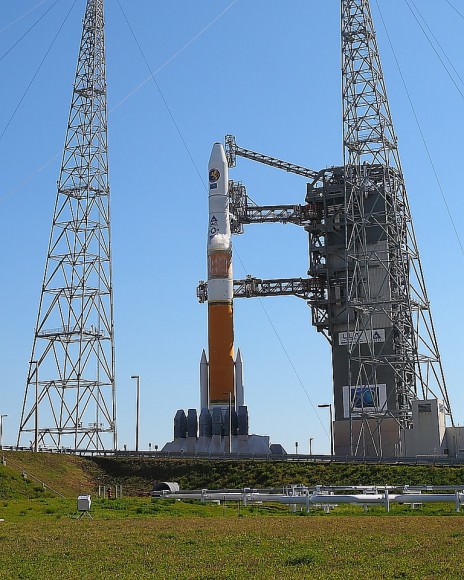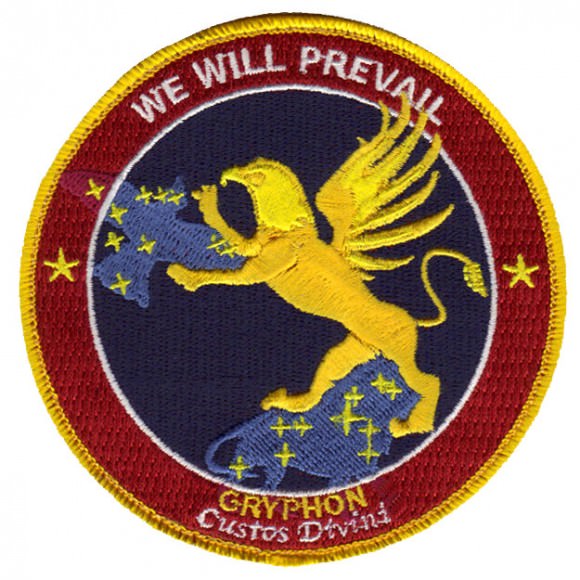Image Caption: National Reconnaissance Office (NRO) spy satellite arrives at Cape Canaveral Launch Pad 37 for mounting on top Delta 4 Heavy Rocket slated for June 28, 2012 blastoff. Credit: United Launch Alliance
See Photo Gallery below
Debby is doing a real number on vast swaths of Florida, dumping up to 15 inches of rain, unleashing deadly tornadoes and dousing hopes of launching a mighty triple barreled Delta IV Heavy rocket on Thursday morning, June 28, with a super secret spy satellite for the National Reconnaissance Office (NRO).
Tropical Storm Debby has destroyed homes, killed at least 1 person and will wreak havoc as it tracks across central Florida from the Gulf Coast to the Atlantic Coast over the next two days – just north of Cape Canaveral, Florida and the Delta 4 Heavy launch pad at Space Launch Complex 37.
The last Delta 4 Heavy to blast off from Cape Canaveral Air Force Station on Nov 21, 2010. Credit: Alan Walters – awaltersphoto.com
The odds of launching the United Launch Alliance (ULA) Delta 4 Heavy on June 28 have dropped to just 30 percent favorable. The outlook improves slightly to 40 % favorable on Friday, June 29 according to the official Air Force weather forecast.
The launch window for Thursday’s ULA Delta 4 Heavy launch stretches from 6:16 a.m. to 10:30 a.m. and comes just 8 days after the last spy satellite blasted off on an Atlas V rocket from Cape Canaveral on June 20 – launch story here.
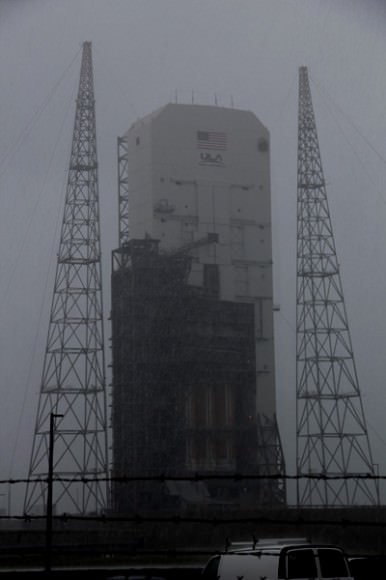
Image Caption: Fog and heavy rain obscure view of triple barreled Delta 4 Heavy rocket protected inside Mobile Gantry from outside high security perimeter gate at Launch Pad 37 on Cape Canaveral Air Force Station, Florida.
Credit: Ken Kremer/www.kenkremer.com
The clandestine NROL-15 payload was bolted atop the Delta 4 Heavy booster several weeks ago.
See the photo gallery below provided to Universe Today showing the shrouded upper stage being hoisted on top of the booster.
This will be only the 6th launch of the 232 foot tall Delta 4 Heavy booster and the first one to feature the upgraded RS-68A first stage engines, delivering 702,000 pounds of thrust each.
A suspect vent relief rocket valve was successfully changed out by technicians over the weekend and will not delay the launch, ULA spokesperson Jessica Rye told Universe Today.
The powerful Delta 4 Heavy rocket and NROL-15 payload are due to be unveiled at pad 37 on Wednesday evening, June 27- depending on Debby !. .
Photo Gallery: NROL-15 Spy satellite delivery and mounting atop Delta 4 Heavy Rocket at Cape Canaveral Air Force Station – Space Launch Complex 37. Credit: United Launch Alliance

